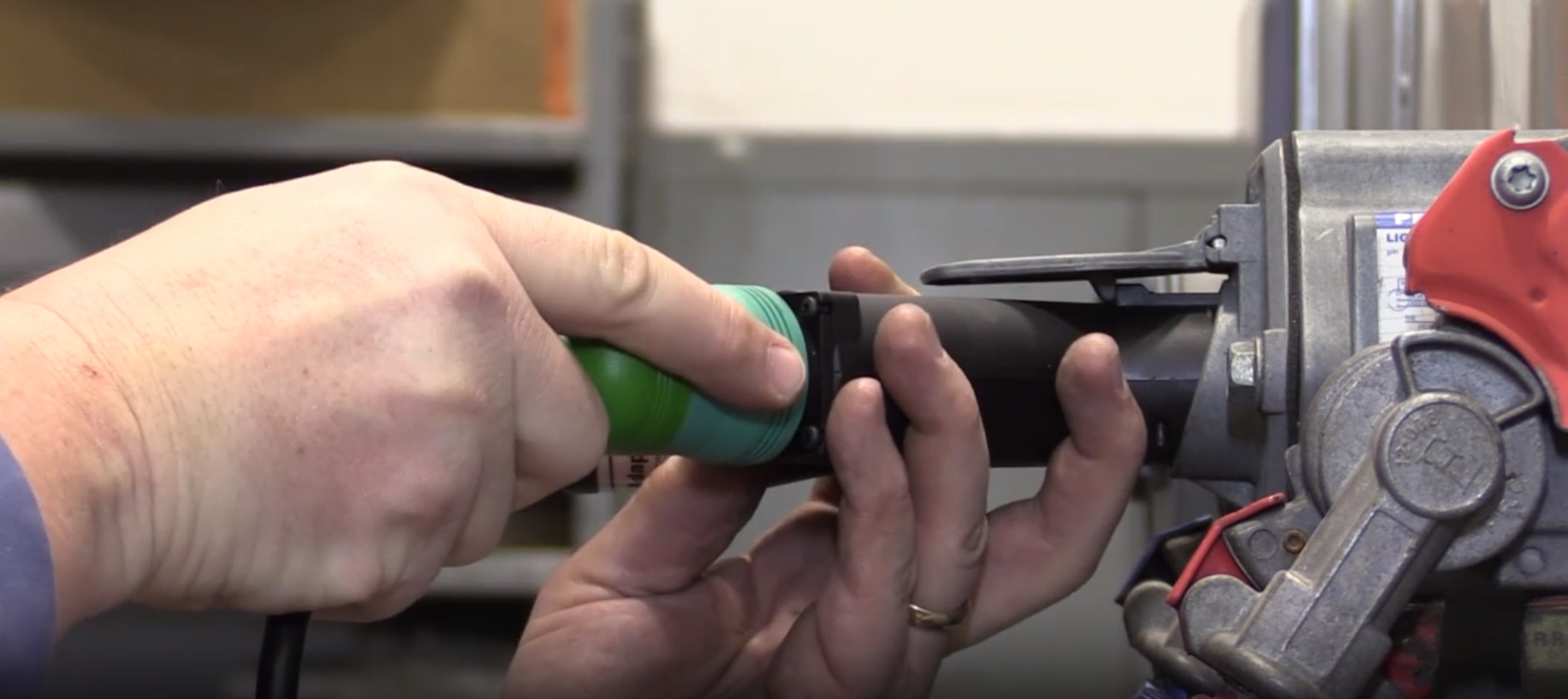They may look similar to automotive engines and be about the same to build, but there are many differences between industrial and automotive engines. Engine builders involved in the industrial market say parts generally dont cross over even though they may resemble their automotive counterparts. And, shops that specialize in this market typically dont build automotive engines. But dont discount the opportunities these engines present, even if you dont consider yourself an industrial expert yet. You may want to delve into this side of the engine building market. But will you be ready to handle the new diesel engine technology heading down the road?
Midsize engines in this market are not what would be considered midsize in automotive/on-highway markets, say our experts. Midsize industrial engines typically range from 3- to 6-cylinders. Though forklift trucks seem to be the most common application (using gasoline, diesel, liquefied propane (LP) and compressed natural gas), there are several other applications for midsize industrial engines. The term industrial engine mainly refers to off-highway applications, such as those found in construction, mining or logging company dozers, backhoes and bobcats. The most common engines are from familiar sounding manufacturers such as Mazda, Mitsubishi, Toyota, Nissan and even GM. But these engines likely will have several different configurations for you to figure out, depending on the application.
Some Similarities/Some Differences
Industrial engine blocks and cylinder heads are the same or similar to automotive engine counterparts, but the external accessories differ from application to application. There may be differences in flywheels, water pumps, timing covers, manifolds, fuel systems and engine block mounting bosses. Identifying the correct application is extremely important when rebuilding these engines because customers expect an exact replacement if you sell on an exchange basis. However, this will be less of a problem if you are rebuilding the customers engine.
Some of the engines on the forklift side such as FE Mazdas, which some people call the 2.0L Mazda, and the 2.2L, which is an F2 are similar to the 2.0L Mazda automotive engine except for a few slight differences. Many of the industrial applications may not have the air pump or air valves that the automotive engines have. And most of the time, these engines dont cross over. You cant go into a junkyard and pull an engine from a B2000 Mazda truck and be assured it will work in a forklift truck. Plus, EPA standards are quite different for these two applications.
Sourcing Parts
Another sticking point for industrial engine builders is sourcing parts. Sourcing parts is always a challenge, say many industrial engine rebuilders. The reason? Availability of parts: some suppliers are two and three days away instead of the one-day that most automotive shops are used to. It can be very difficult to find the parts you need and then you have to deal with the time issue because it will take three days between order and delivery. And its difficult to stock everything a rebuilder shop needs.
The cores and parts for these engines are another issue. The cores are getting more difficult to find, and the parts for these engines are harder to track down. With all the company mergers and licensing agreements, sometimes you have to go through a different manufacturer for parts for another manufacturer because they have a distribution partnership. As crazy as it sounds, for example, you have to go through CAT to get any parts for Mitsubishi because they own the rights.
Variations
Another big challenge in this market, say our experts, is the range of different engine combinations you need to be familiar with. One of the daunting tasks is realizing that these engines have several applications and variations, and many of the engines have unique drive accessories.
While there may be eight different combinations for the 4.3L GM, some Continental mid-range diesel engines have as many as 25 or 30 different combinations of assembly. Thats a big challenge for shops since they must correctly specify an engine and provide their dealers with exact fit engines.
On many of the diesels you have to go back to the dealer for parts because they arent usually available in the aftermarket. And it can get expensive, having to buy from a dealer and wait for the parts. It can sometimes be a challenge to build an engine at a competitive price if you have to buy everything from a dealer. On the flipside of that, though, some industrial applications, especially diesels, are not available from the dealer or anywhere else. Many of these engines simply werent built in large enough volumes to justify tooling up to build more parts. Subsequently, new engines may not be available from the dealer so a customer will come to you to rebuild what he has instead of investing in new equipment. Industrial engine builders say that another difference with the automotive world is that standard oversizes are not always available. You will need to keep this in mind when ordering parts and doing the machine work. Some engines will only have .010 and .020 oversizes available.
Getting the Job
Industrial engine builders take different approaches to the market. Some shops specialize in only industrial work through various dealer networks and manufacturers while the smaller shops tend to work more with individual companies in their region who use the equipment. One engine builder says that there is a lot of work out there through local construction and agricultural companies as well as factories, but he believes it also helps to be able to service the whole machine, not just the engine.
Applications
The sheer number of midrange diesel engine applications is astonishing. Everything from ambulances and delivery trucks to farm and construction equipment utilize one of these diesel engines, and it looks like in the future there will be even more applications. In 2007 the number of diesel engines is expected to climb, and much of that growth is expected to be in the midrange market.
Diesel engines offer many advantages over gasoline engines including more torque, increased fuel mileage and better durability. Many businesses purchase fleet vehicles with diesel engines for the long term cost savings.
The applications you service will depend largely on your location, say experts. If you are close to an airport, for instance, you may find lucrative opportunities because many support vehicles are diesel powered.
Consider the EPA Involvement
In October 2002 EPA required all on-highway diesel engines to meet more stringent emissions requirements. Manufacturers had to go back to the drawing board and come up with completely new engine designs. Not all midrange engines are currently affected by the new EPA regulations (such as those for off-highway use), but regulations are likely on the way. This year, as low sulfur fuel is available, there will likely be another wave of new engine designs from the manufacturers.
According to some engine builders, more pre-EPA engines are being rebuilt now than ever. Because these pre-EPA midrange engines are much less complicated than their post-EPA electronic injection counterparts, they may offer the most profit potential. Parts for older engines are available from multiple aftermarket suppliers, and the dealers still stock many parts for these engines as well. And though EPA certified emission systems are not currently required, there may even be opportunities for rebuilders to retrofit older engines with them.
Without question, the EPA standards for new diesel engines have had a significant impact on the market. But, exactly how it affects engine builders is not yet known. According to several engine builders, they are seeing more work on older leading some to believe that many companies cannot yet afford to upgrade to the newer EPA engines.
For rebuilders in the midrange market, the challenges may be that newer electronic engines last too long. The older 6.9L, 6.5L, 6.2L and even 7.3L engines went about 200,000 miles before needing rebuilt. Now, late-model electronic engines are going 400,000 miles said one engine supplier.
New Technology Electronic Engines
Much in the way that electronic fuel injection affected the production gasoline engine market, it has had an impact on late-model midrange diesel engines. Electronically controlled pumps and high-pressure common rail systems have replaced mechanical injector pumps, offering variable injection timing to deliver the right amount of fuel at exactly the right moment.
The point that fuel is injected on a diesel engine must be timed precisely; otherwise the engine will clatter and emit excessive smoke in the exhaust. On older diesel engines, a high-pressure mechanical pump is timed similar to a distributor by rotating its index position with respect to the camshaft.
New-style diesel engines still have high-pressure pumps, but injection timing is now electronically controlled through the vehicles ECU. A crankshaft or camshaft position sensor and injection control pressure sensor are used to calculate injection timing, which is crucial to a diesel engines performance.
Several engine builders said they do not rebuild electronic pumps in-house because equipment to test injector pumps is very expensive. And unless you specialize in rebuilding pumps it may not be worth the added expense. So some engine builders prefer to outsource this end of the job to a shop that specializes in rebuilding electronic pumps.
There is still strong demand for older midrange diesel engines at the present time. But electronically controlled diesel engines loom on the horizon as either an opportunity for you to get into the market and be a specialist, or find another engine-related career.
| Did You Know Domestic engines such as Continental and others used to rule the market back in the day, but they are now obsolete due mostly to their flathead engine design, and the fact that the market is flooded with less expensive Japanese engines. However, these durable engines are still around in abundance so as a future engine builder, youll need to be familiar with them. Industrial customers typically hang on to their equipment for a long time and engines often have several rebuilds on them before equipment is replaced all together. |


